Headed by Antonio Meze, Meze Audio have offered the audiophile community a relentless focus on product aesthetics married to world-class sound. Their venture into high-end started with the Meze Empyreans which had won a huge following for its compelling design and accomplished sound.
Consequently, Meze Audio have released new flagship offerings including the Meze Audio Elite and Meze Audio Liric Headphones (subject of this review). The Meze Audio Liric Headphones represent the company’s first high-end closed-back planar-magnetic headphones. Akin to its predecessor, the Liric is powered by Rinaro’s Isodynamic Hybrid Array Driver – this time re-engineered for more portable use.
With a selection of high-grade magnesium, leather and aluminum materials, the Liric aims to capture the market for discerning audiophiles looking for high-fidelity sound on the move. Priced at $2000 (or €2000 / £1,799), the Liric is hand-assembled to Meze Audio’s exacting standards with a proprietary MZ4 driver designed to minimise phase non-linearity issues found in closed-back headphones.
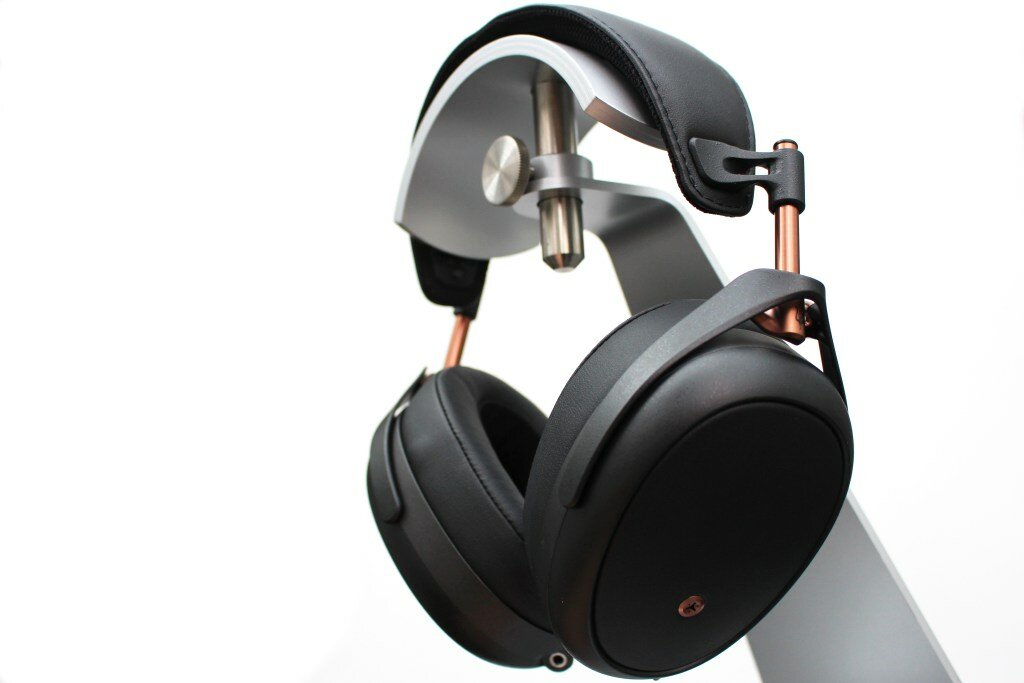
The Packaging
The Meze Audio Liric does not come in the same aluminum carrying case as the Meze Audio Elite before it. Instead, Meze have opted for a hinged display box which houses a hard clamshell carrying case. Though designed for portability, the carrying case is on the larger side of the scale to accommodate the Liric in its entirety. Inside the carrying case is a soft plush interior which protects the Liric headphones from scratches.
Users also get two sets of cables: a 1.5m soft TPE cable and a 3m soft TPE cable both terminated in a 3.5mm jack. Also supplied is a 3.5 mm to 6.3 mm jack adapter as well as an airline adapter. A soft pouch is finally present to store the cables and accessory pieces.
Though the Meze Audio Liric is designed to be driven from more portable sources, the inclusion of a cable terminated in XLR would not have gone amiss. Nevertheless, the packaging is overall elegant and exudes a premium feel.
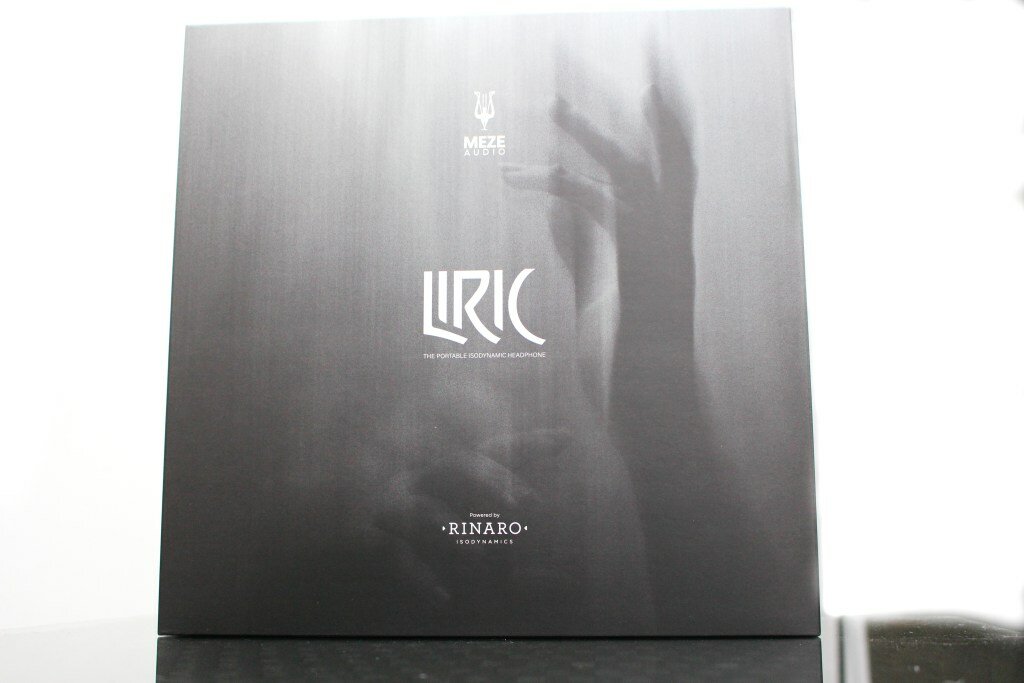
Build Quality & Design
There is no doubt that Meze Audio are masters of product design and the Liric bears no exception. As aptly described by the company itself, the Liric is an embodiment of cutting-edge technology in an ‘artful, almost sculptural frame’.
The Liric takes a leaf out of the Elite & Empyrean design philosophy with its aluminum yokes and circum-aural ovoid ear cups. The headband, this time, is unibody with real leather supported by a spring steel material. True to their attention to detail, Meze have designed the headband cushions to promote airflow and reduce heat and humidity build-up.
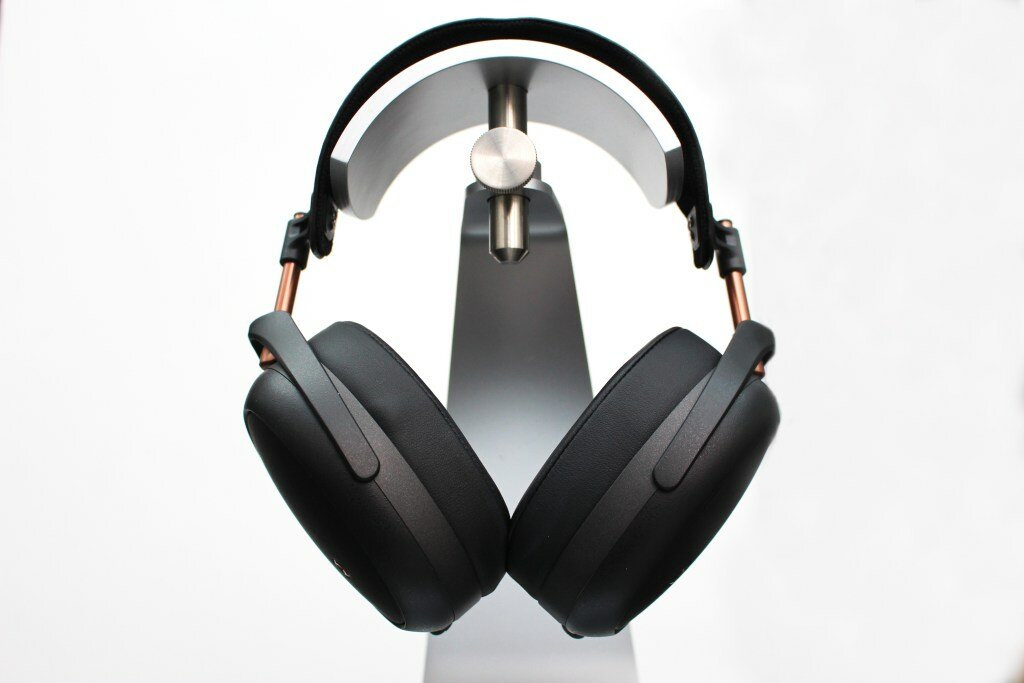
The chassis of the earcups are made from magnesium chosen for its lightweight, oxidant-free and shock-resistant properties. The angled earcups are able to pivot 360 degrees in relation to the aluminum yokes allowing for supreme flexibility. One suggestion would be the use of a foldable design which would enhance user convenience levels even further – especially in the context of commutes.
The twin rod system offers the right amount of resistance to hold its place yet allowing easy adjustment of the ear-cups. As with the aforementioned design elements, the build and design of the sliding mechanism is nothing short of excellent.
The Driver
The Meze Audio Liric employs a 92 mm x 63 mm ovoid MZ4 isodynamic hybrid array driver produced by collaborative partner Rinaro. To give some context, Rinaro are an acoustic engineering company with over 30 years of experience in the field of acoustics and planar technology. Their impressive creations have helped to earn both the Empyrean and Elite notable acclaim for their lightweight and high-resolution sound.
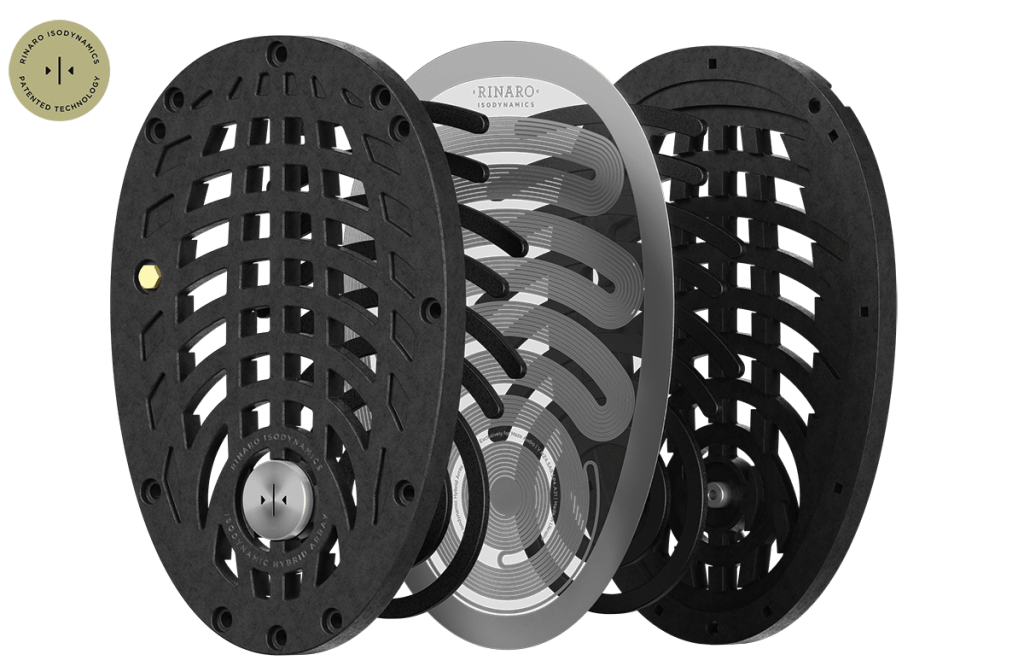
The challenge this time, according to Pavlo Shymanovych (Founder of Rinaro Isodynamics) was to scale down their tried and tested technology into a closed-back headphone design. Their isodynamic technology which uses a thin and light diaphragm containing a component sensitive to magnetic impulses differs compared to other transducers. Meze have opted for the use of two coils (a spiral coil and switchback coil) with differing placements at the diaphragm to allow more effective delivery of sound frequencies.
Two neodymium magnets with a power of 0.3 Tesla are the backbone of the electromagnetic field driving force for the diaphragm.
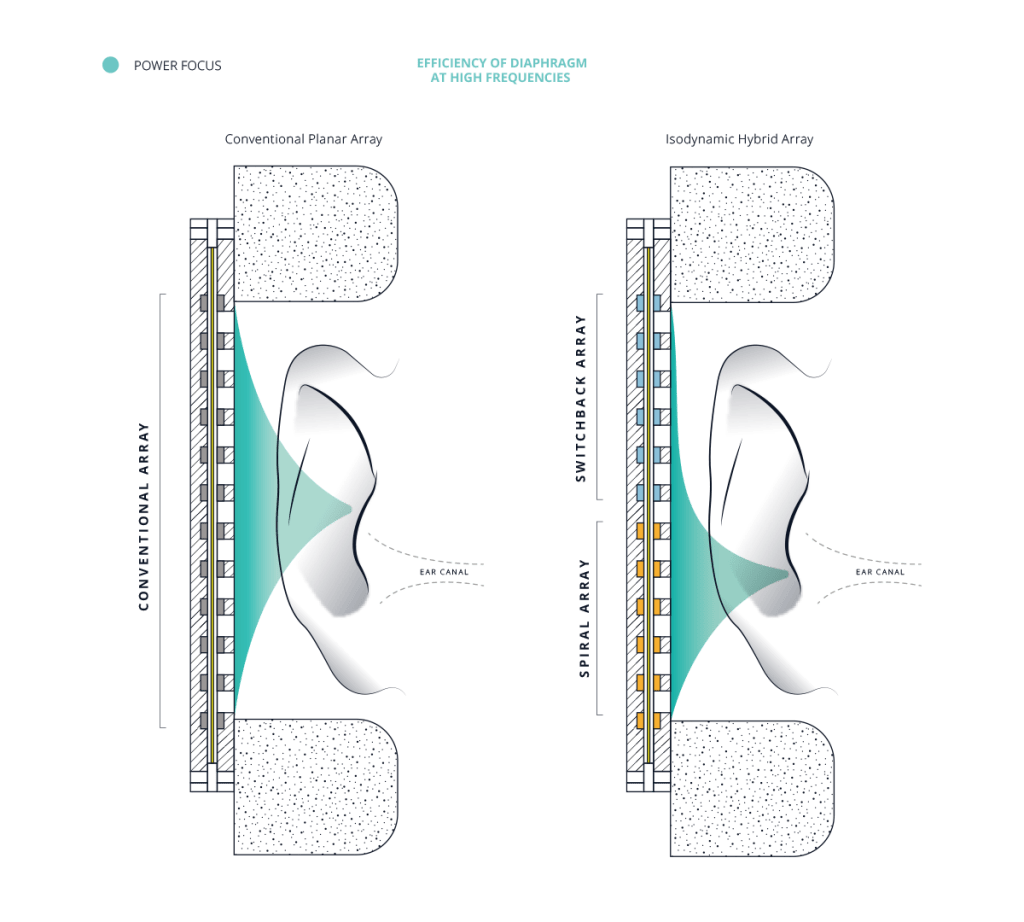
With the use of the Phase-XTM system, Rinaro have aimed to minimise phase nonlinearity issues plagued by closed-back design while aiming to improve accuracy of spatial imaging.
The Meze Audio Liric also features an Ear pad Air Flow (EAF) technology which uses a rear vent port to reduce sound pressure while enhancing acoustic chamber performance.
The isodynamic driver has a total harmonic distortion (THD) of < 0.15% and offers a wide frequency spectrum ranging from 4 Hx to 92,000 Hz.
Comfort
The Meze Audio Liric weighs in at 390g which is by no means the lightest when compared against other portable headphone offerings. However, the compact design coupled with the headband and pads help to evenly distribute the headphone’s weight for a comforting fit.
The deep and angled circum-aural ear cups also accommodate the natural contouring of the ears allowing for an overall more ergonomic fit.
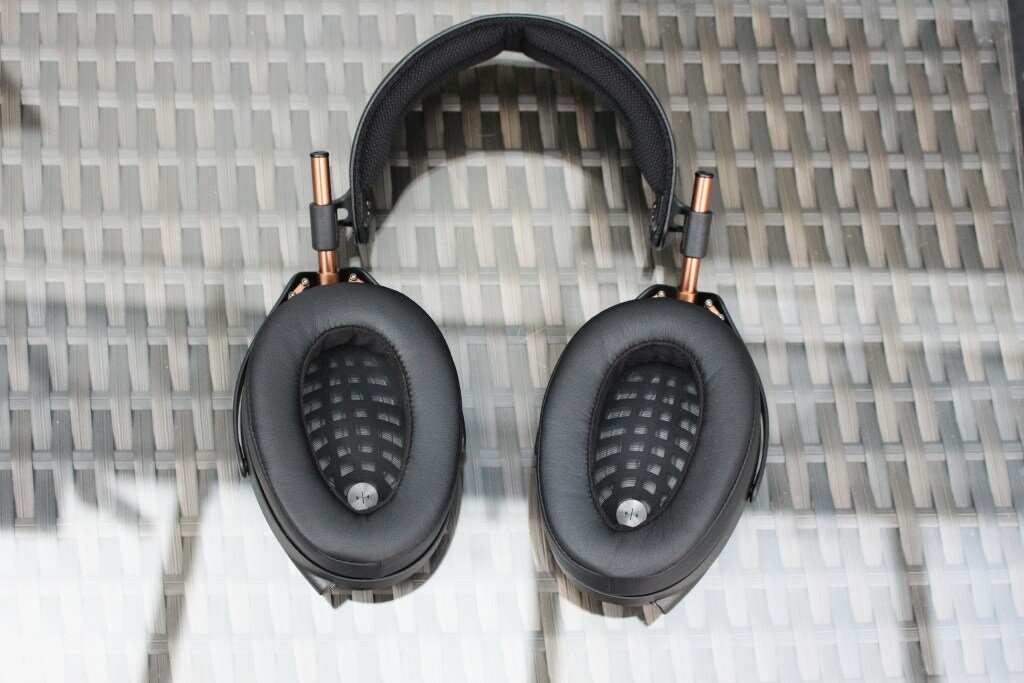
Sound Impressions
The Bass
The Meze Audio Liric hosts a generous bass profile with an elevation from 50 to 100 Hz and a gentle downsloping from 120 Hz to 200 Hz. As a result, there is more sub-bass presence compared to the mid-bass.
Bass is well crafted and while not the most authoritative – there is an impressive level of depth, control and finesse. Meze and Rinaro have done well to scale down the MZ3 driver to retain its planar characteristics in the closed-back format. Compared to the ZMF Verite Closed, the Liric provides the more articulate and textured bass response whereas the Verite offers more dynamism and impact.
In ‘Escape from LA’ by The Weeknd, the Liric is able to recreate low frequency bass with fantastic depth and texture. Since there is a natural decay from the sub-bass to mid-bass and lower midrange – there is no artificial bleeding that would otherwise detract from the rest of the frequency spectrum.
The Midrange
While the original Empyreans lean more towards an organic and rich tone, the Meze Audio Liric attempts to deliver notes in a slightly ‘cleaner’ fashion. This can be in part explained by the higher mid-bass emphasis of the Empyreans whereas the Liric demonstrates more intra-frequency contrast between its upper bass and lower midrange.
As a result, notes possess less even-order harmonic overtones in favor of a ‘cleaner’ sound. With that said, the Liric is still relatively relaxed in its delivery with the planar driver effortlessly rendering micro-dynamic cues and detailing.
Towards the upper end of the midrange, the Liric is both resolute and crisp without ever being ‘shouty’ and attracting unwanted resonances which plague some closed-back designs. When considering the properties of immersion, the Liric does well in projecting vocals which possess full note size while boasting stellar instrument separation.
The Treble
The treble region could offer some source of contention for users. While not inherently bright, the Meze Audio Liric possesses some glean in its notes which stems from its more defined leading edge transients. For some, this is not likely to represent any issue but those who are more sensitive to treble may wish for less energy within this region.
Having said this, the treble region of the Liric is certainly a departure from the Meze house sound with more extension and air in its delivery.

The Soundstage & Imaging
The Meze Audio Liric employs a ‘PhaseX System’ which aims to provide superior spatial qualities for closed-back headphones.
To this extent, the Liric has similar soundstage width and depth compared to other adversaries such as ZMF Verite Closed and Focal’s Stellia. However, it excels in instrument separation and imaging with clear separation between notes crafting more sense of scale and space.
There is great panning of stereo imaging and the Meze Audio Liric does well to render a cohesive and holographic soundscape.
Comparisons
ZMF Verite Closed ($2499)
The ZMF Verite Closed still stands as an excellent closed-back offering from ZMF’s Zach Mehrbach. While the Verite Closed makes use of exotic woods, the Meze Audio employs industrial grade material for its outer ear cups.
Comparing the two, the Verite Closed offers more in terms of micro and macrodynamic prowess with a more rich tonal profile. The Liric, on the other hand, offers better resolution with a ‘cleaner delivery’ of notes. Both offer stellar soundstage with the Verite Closed going further with outstanding front-to-back depth.
In terms of comfort, the Liric is more compact and weighs less compared to the Verite Closed. In this regard, the Liric would be the more apt choice to use in the commute settings.
Focal Stellia ($2990)
The Focal Stellia represent the French audio company’s flagship closed-back headphone. Comparing the two, the Focal Stellia resolves better than the Liric with an inclination to reveal micro-details and dynamic gradations.
However, the Meze Audio Liric delivers a more spacious soundstage compared to the slightly more intimate Focal Stellia. This is perhaps aided by its PhaseX system and ear cup flow system.
Comfort wise, I have found the Meze Audio Liric to prevail for longer term listening sessions owing to its well crafted and ergonomic design.
Meze Empyrean ($2999)
While it may be unfair to compare the Empyrean with the Liric given the fact that the former is an open-back model, some may be interested to hear of the differences.
As expected, the Empyrean provides the more open and spacious sound owing its open-back form factor. The Empyrean sound is that of a darker tonal profile with a more curtailed treble presence whereas the Liric throws in flashes of brightness in the higher frequency range.
Both offer superior levels of comfort compared to other models which is the likely the result of Meze’s extensive product testing and focus on ergonomics.
Conclusion
It was inevitable that Meze would create a closed-back offering following the success of the original Meze Empyreans. While the two offer a slightly different sound profile, the same philosophy is there with relentless product design and acoustic performance. The $2000 Meze Audio Liric is a competitive product with a spacious sound and refined yet relaxed presentation. While some may yearn for a darker tonal profile such as the Meze Empyrean or the richer organic tone from the ZMF Verite Closed, the Meze Audio Liric may appeal to those looking for a planar sound with a cleaner delivery.
In addition, the Meze Audio Liric offers a lightweight, comfortable and adaptable headphone for commutes. For these reasons, the Meze Audio Liric certainly earns a recommendation from us in the category of closed-back headphones.
Here’s to closed-back listening!
Meze Audio Liric Specifications:
Driver Type: Rinaro Isodynamic Hybrid Array® MZ4
Operating Principle: Closed
Ear Coupling: Circumaural
Frequency Response: 4-92,000 Hz
Impedance: 30 Ω
Nominal: SPL100 dB (1 mW / 1 kHz)
Maximum SPL> 130 dB
Total Harmonic Distortion (THD): <0.15%
Weight: 391 g
